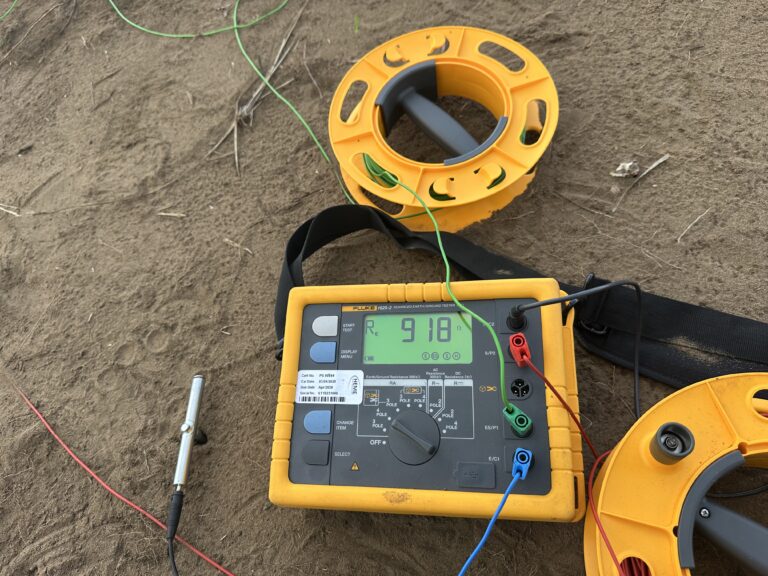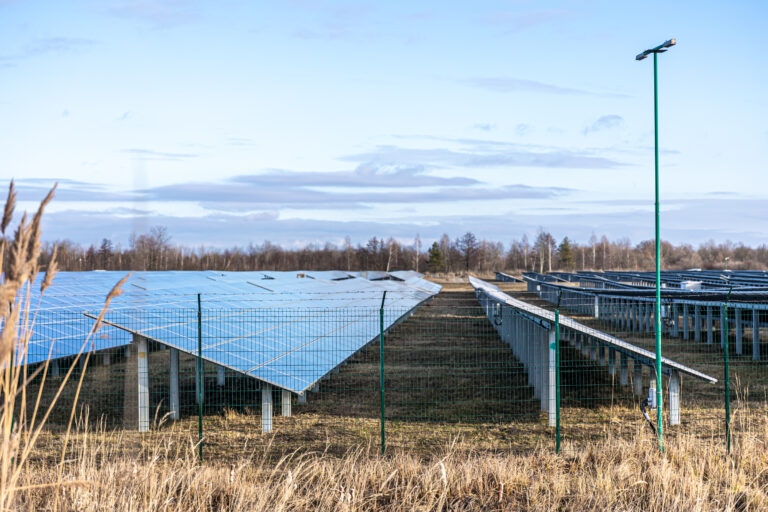Ground Mounted PV Panels: Proven Steps for Successful Deployment
Ground mounted PV panels have become an increasingly popular and practical solution for both commercial and agricultural energy requirements, offering flexibility, scalability, and optimal sun exposure. However, before installation begins, it’s critical to undertake a comprehensive preparation process.
This includes a full site assessment, geotechnical investigations, environmental impact analysis, and detailed system planning. In this guide, we walk you through the essential steps, technical considerations, and industry best practices for successfully preparing a ground mounted photovoltaic system, ensuring long-term reliability, compliance, and maximum energy output.
Site Assessment and Planning for Ground Mounted PV Panels
Solar Irradiance and Weather Conditions
Accurate solar irradiance data is essential for forecasting the energy output of a ground mounted PV system. By utilising a solar radiation sensor, developers can monitor and analyse the site's sun exposure across different seasons. This data helps in optimising panel placement, tilt angles, and overall system design to ensure maximum efficiency and long-term performance.
Land Use, Accessibility, and Maintenance
Analysing land use, topography, and existing site features is vital for the effective deployment of a ground mounted PV system. Proper orientation and tilt depend on unobstructed sunlight, making it crucial to identify and remove potential shading obstacles like trees or nearby structures. Additionally, ensuring easy access for construction crews and future maintenance teams enhances system reliability, simplifies repairs, and reduces long-term operational costs.
Planning Permissions and Grid Connection
Securing local zoning approvals and utility interconnection agreements is a crucial early step when preparing a ground mounted PV system. Regulations and permit requirements can vary significantly by location, so proactive compliance is essential. Addressing these legal and technical prerequisites early helps avoid costly delays, ensures proper system integration, and guarantees alignment with safety and grid compatibility standards.

Soil and Foundation Preparation for Installing Solar Panels on the Ground
Geotechnical and Soil Resistivity Testing
Understanding soil conditions is fundamental when designing a ground mounted photovoltaic system. Conducting soil resistivity tests ensures proper electrical grounding and safe fault current dissipation. Simultaneously, geotechnical investigations assess soil bearing capacity, moisture levels, and drainage potential. These insights are crucial for selecting the appropriate foundation type, anchoring method, and ensuring long-term structural stability and performance of the PV installation.
Selecting the Right Anchoring System
Choosing the correct anchoring method for ground mounted PV panels depends on soil composition, moisture levels, and load-bearing capacity. Options include concrete piers, driven piles, or helical piles, each suited to different site conditions. Proper anchoring not only provides structural stability but also protects the system from environmental stressors like strong winds, heavy rainfall, and shifting ground over time.
Weather Station Setup and Environmental Sensor Integration
Installing a compact weather station near the ground mounted PV system enables real-time, continuous monitoring of environmental conditions such as temperature, irradiance, wind speed, and humidity. This data is crucial for accurately forecasting system performance, identifying potential issues early, and optimising energy output. It also supports data-driven maintenance and operational decisions, enhancing system reliability and overall efficiency.
Wind Speed and Wind Direction Sensors
These sensors are essential for understanding prevailing wind patterns at the installation site. Monitoring wind behaviour helps evaluate the risk of structural stress or damage to the PV arrays. This data supports decisions on racking design, anchoring requirements, and site safety measures, ultimately enhancing the overall durability and resilience of the system.
Air Temperature Sensor
Temperature directly affects the performance of solar panels, with higher temperatures potentially reducing efficiency. An air temperature sensor helps estimate thermal impacts on energy output and can inform performance forecasting. It also assists in identifying overheating risks for inverters and other electrical components, guiding proactive cooling or shading strategies.
Humidity Sensor
Monitoring relative humidity is critical for both panel efficiency and the long-term health of electrical components. High humidity levels can lead to condensation, corrosion, or insulation degradation. This sensor helps operators assess environmental wear-and-tear risks, plan protective measures, and determine optimal maintenance intervals to preserve system longevity.
Rain Gauge
A rain gauge tracks precipitation levels, providing valuable input for site maintenance planning. Natural rainfall can assist with panel cleaning, while prolonged wet conditions may signal the need for drainage improvements. Accurate rainfall data helps assess soiling losses and optimise cleaning schedules to maintain peak energy output.
Pressure Sensor
Atmospheric pressure data enhances the accuracy of environmental modelling and supports broader climate analysis at the site. It can also contribute to more precise forecasting of weather patterns, helping operators prepare for environmental fluctuations that may impact system performance or safety.
Solar Radiation Sensor
Also known as a pyranometer, this sensor measures actual solar irradiance received by the panels. It is essential for comparing real-time solar input with modelled expectations, enabling accurate performance assessment. Deviations may indicate shading, soiling, or technical faults, supporting timely diagnostics and performance optimisation.

Pros and Cons of Environmental Data Monitoring:
Pros
Optimises array performance with real-time data
Continuous monitoring of environmental conditions, such as temperature, irradiance, and wind speed, allowing operators to make data-driven adjustments that maximise energy output. Real-time insights help quickly detect inefficiencies or external factors impacting system performance, ensuring the PV array consistently operates at peak efficiency.
Informs predictive maintenance and cleaning
Environmental sensors provide early warnings about conditions that may lead to soiling, corrosion, or mechanical wear. For example, a drop in solar radiation relative to expectations may indicate panel dirt accumulation. This enables targeted, cost-effective maintenance schedules rather than relying on fixed intervals, reducing unnecessary interventions and improving system uptime.
Enhances ROI calculations with precise environmental metrics
Accurate, site-specific data improves energy yield modelling and financial forecasting. By comparing expected versus actual performance under local conditions, investors and stakeholders can better evaluate the return on investment (ROI) and fine-tune project assumptions for future developments or expansions.
Cons
Increases upfront costs and installation complexity
Integrating environmental monitoring systems requires additional hardware, software, and installation labour. These costs can be significant for smaller projects and may affect initial budget allocations, particularly if advanced sensors or data platforms are used.
Requires calibration and ongoing maintenance
Sensors need regular calibration and cleaning to maintain accuracy. Without proper upkeep, data quality can degrade over time, leading to incorrect conclusions or missed performance issues. This introduces recurring operational expenses and requires trained personnel or service contracts.
Data overload without proper interpretation tools
Collecting large volumes of environmental data is only useful if it can be effectively analysed. Without advanced software, automation, or knowledgeable personnel, there's a risk of being overwhelmed by raw data. This can lead to underutilised insights or misinformed decisions if the data isn’t properly contextualised and acted upon.
Electrical System Setup for Ground Mounted PV Installations
Grid Tie-In and Inverter Selection
Choose an inverter that aligns with the capacity and configuration of your ground mounted PV system, whether it's grid-tied or integrated with battery storage. Proper inverter selection ensures optimal performance and system compatibility. Installing the inverter close to the solar array minimises voltage loss, boosts overall energy efficiency, reduces installation costs, and streamlines cable management for long-term reliability.
Cable Routing and Grounding
Design cable routes to minimise length, reducing energy losses and enhancing system efficiency, while avoiding high-risk zones such as areas prone to mechanical damage or extreme environmental conditions. Implement proper grounding based on soil resistivity test results, ensuring safety. Additionally, include a clearly labelled disconnect switch for easy system isolation during maintenance or emergencies.
Security and Reversibility of Ground Mounted pv Systems
Site Security Measures
To protect ground mounted PV panels from theft and vandalism, install secure fencing, surveillance cameras, and alarm systems. These measures not only provide physical barriers but also enable continuous monitoring, ensuring rapid response to potential threats. By combining deterrents and detection tools, you enhance system integrity, reduce downtime, and safeguard your investment in renewable energy infrastructure.
Planning for Reversibility
Use modular racking systems and avoid permanent foundations whenever feasible to allow for easy disassembly and relocation at the end of the solar system’s lifecycle. This strategy reduces long-term environmental impact, preserves land integrity, and simplifies site restoration. It supports sustainable development by ensuring minimal disruption to the natural landscape once the system is decommissioned.
Preparation for a ground mounted PV installation involves several critical steps, including environmental monitoring, soil testing, securing the necessary permits, and ensuring compliance with local grid regulations.
It is essential to integrate tools like a weather station equipped with comprehensive sensors to monitor wind, temperature, humidity, and solar radiation. This data-driven approach allows for a smarter, more resilient design.
By planning meticulously and utilising data effectively, your ground mounted pv system will perform optimally, while remaining adaptable to future advancements or changes in regulations.
